You will need:
- Cardboard or balsa wood (laminated paper or a thin plastic chopping board works well too)
- Tub of water, scissors and glue
- Detergent or soap
- This image to print out
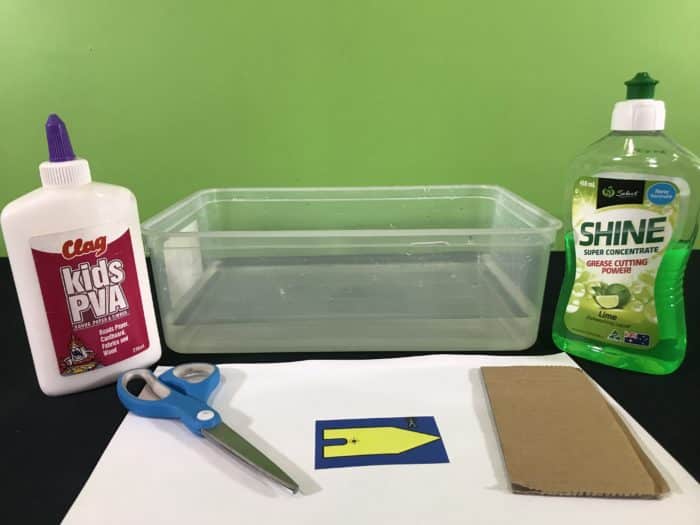
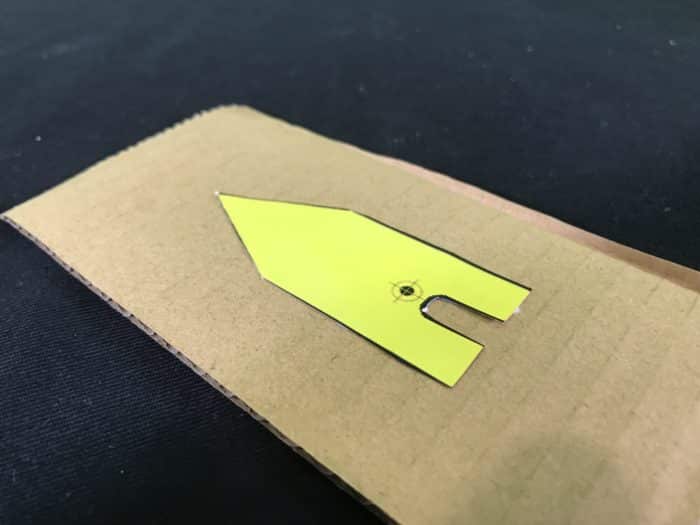
Print, cut out and glue the picture here onto some cardboard, or copy it onto your piece of balsa wood.
We’ve found that thin plastic such as a chopping board works well too!
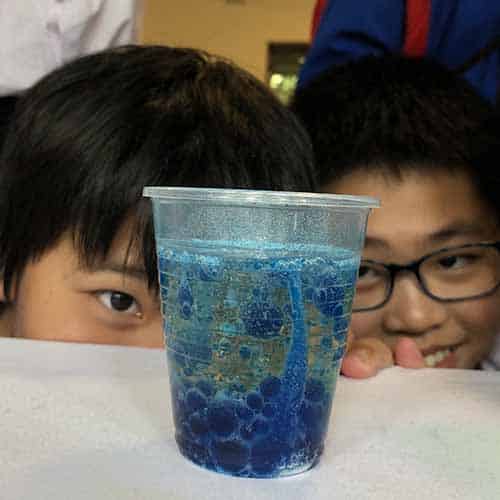
School science visits since 2004!
– Curriculum-linked & award-winning incursions.
– Over 40 primary & high school programs to choose from.
– Designed by experienced educators.
– Over 2 million students reached.
– Face to face incursions & online programs available.
– Early learning centre visits too!
Why Does This Happen?
The movement of the soap powered boat can be explained by a combination of three principles. All liquids have surface tension along the surface of a liquid, caused by intermolecular forces within the liquid pulling liquid molecules together. Because of surface tension, liquid surfaces act like a kind of ‘skin’, able to support small insects and materials on their surface.
Isaac Newton’s third law of motion says for every action there is an equal and opposite reaction.
The movement of the detergent provides a ‘pushing force’ backward into the water surface as the detergent molecules spread out, sending the boat forward… i.e. an equal and opposite motion.
The Marangoni effect is also acting upon the boat. This effect describes how a liquid with a high surface tension pulls more strongly on the surrounding liquid than a liquid with low surface tension. If you change the surface tension of some parts of the liquid you introduce a difference in surface tension or ‘gradient’. A presence of a surface tension gradient will cause the liquid to flow from areas of low surface tension to high surface tension. Your detergent molecules reduced the water surface tension behind the boat, causing the water (and the boat) to move forwards.
To repeat the experiment you may have to get clean water without detergent so that the surface tension is equal throughout the water.
Variables to test
- Try different shapes of boats and amounts of detergent, does it make a difference?
- What happens if you use soap instead of detergent?
- Teaching about Newton’s laws? Check out the Forces, Friction & Movement workshop!
Get in touch with FizzicsEd to find out how we can work with your class.
Working with Water
Years K to 2
Maximum 30 students
School workshop (NSW & VIC)
60 or 90 minutes
Online Class Available
STEM Full Day Accelerator - Primary
Designed from real classroom experiences, this modular day helps you create consistently effective science learning that directly address the new curriculum with easily accessible and cost-effective materials.
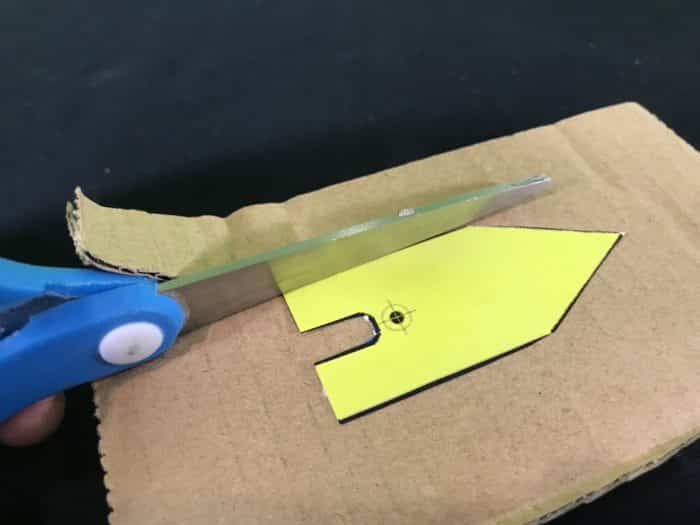
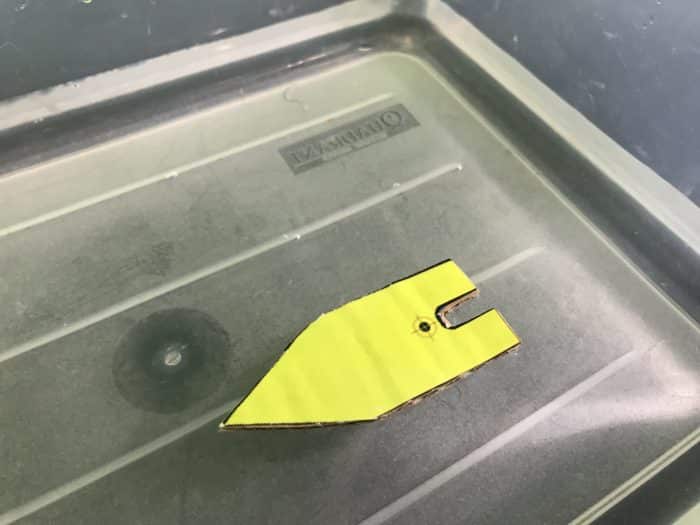
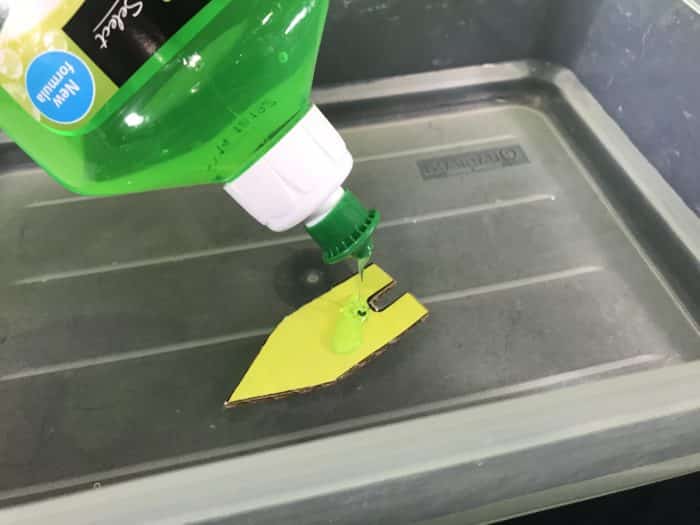
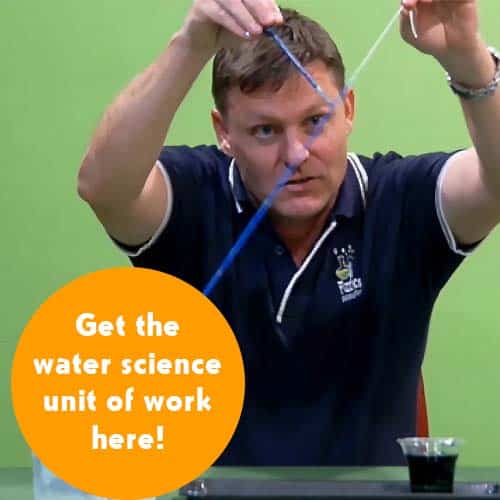


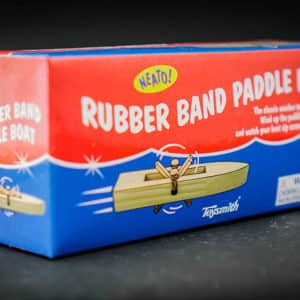
























very clear and good article easy to understand. Thank you
nice
Where is the picture to cut out?
Thanks for the heads up! The link above has been fixed. You can get the image here. Thanks for trying this experiment!